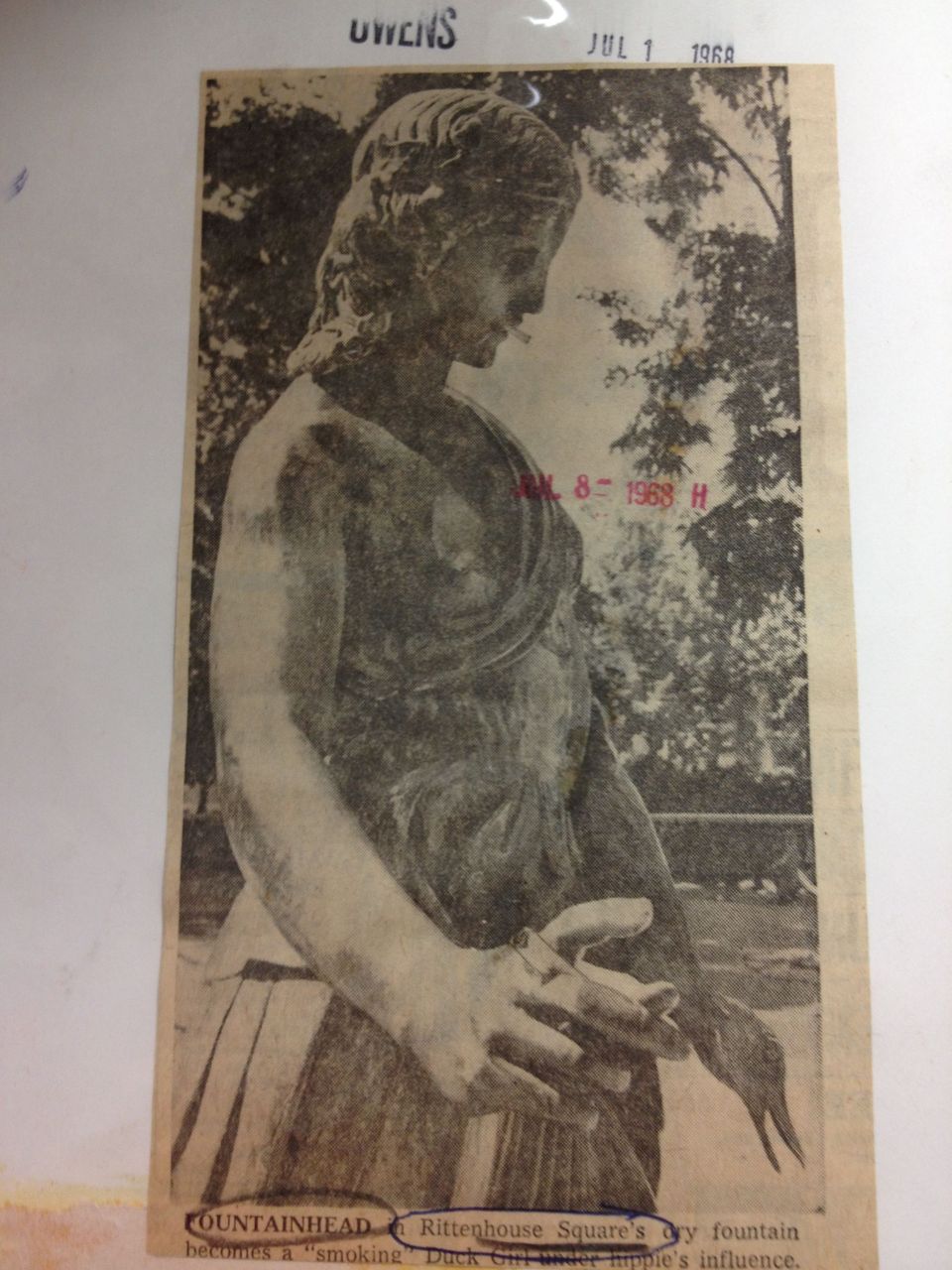Rittenhouse Square is widely known as Philadelphia’s most effective use of public space. Where other Philadelphia parks failed, Rittenhouse succeeded. In her novel The Death and Life of Great American Cities, Jane Jacobs explores why this park thrives in our city. “Rittenhouse Square, the success, possesses a diverse rim and diverse neighborhood hinterland…this mixture of uses of buildings directly produces for the park a mixture of users who enter and leave the park at a different time.” The park serves as a center point for the most diverse neighborhood in Philadelphia. It comes to no surprise that the park would contain some pretty exceptional pieces of public art. Famed French sculptor Antoine-Louis Barye’s “Lion Crushing a Serpent” and Albert Laessle’s “Billy” have inhabited the park for almost a century. “Billy”, a sculpture of a billy goat, serves as a favorite for children who like to ride his back and supposedly acquire good luck from his golden horns. Barye’s “Lion Crushing a Serpent” which symbolizes good conquering evil is the most prized piece of public art in the square, due to its age of almost 200 years and distinguished career of its creator. The other exceptional piece of public art that currently occupies Rittenhouse Square is Paul Manship’s “Duck Girl”. None of the other pieces in the square have as long of a back-story as Manship’s sculpture. Paul Manship was a native of St. Paul, Minnesota but moved to Philadelphia to receive an education at the Pennsylvania Academy of Fine Arts. After his graduation he entered the highly competitive Prix de Rome, an art scholarship which he ultimately won gaining him admittance to the American Academy in Rome. In his second year at the academy he was assigned to create a sculpture of a life-sized figure. Manship decided on an archaic take for this work, which came as a surprise considering the meager engagement he had with other ancient works at this point in his career. “Its naturalism notwithstanding, Manship clearly based the Duck Girl on an elegant Hellenistic bronze of a youth, long identified as Narcissus, from the Museo Nazionale in Naples. The museum considered the 'Narcissus' a gem of its superb ancient bronze collection.”
 |
| Comparing Duck Girl and Narcissus |
In 1911, after “fussing over it a deuce of a lot” Manship’s Duck Girl was completed. It wasn’t until 1914 when it was first exhibited at the Pennsylvania Academy of Fine Arts. Upon exhibition, Duck Girl received the George D. Widener Gold Medal award for best sculpture from PAFA. After its success in exhibition it was strongly recommended to be bought by the Fairmount Park Art Association’s Committee of Works of Art. In 1916 the sculpture was installed at Cloverly Park, at Wissahickon and School House Lane in Germantown. In 1934, Manship’s most acclaimed work, Prometheus, was installed at Rockefeller Center and ultimately paved Manship’s path to prominence. Due to his newly acquired recognition in the art world, the Fairmount Park Association decided that Rittenhouse Square would be a more appropriate location for Duck Girl.
 |
| Rittenhouse Square before Duck Girl |
 |
| "Fountainhead in Rittenhouse Square's dry fountain becomes a 'smoking' Duck Girl under hippie's influence." |
In addition to vandalism, the fountain and pool that she occupies are shut down for a vast majority of the year due to the weather, which makes her inclusion in the park even more questionable in the winter due to her nautical theme. Rittenhouse Square is my favorite place in Philadelphia and it deserves to have a better centerpiece than Duck Girl in the reflecting pool. The destruction of Duck Girl would serve as a basis for improvement and symbolically rid Rittenhouse Square of its pre-existent and outdated notions of high class. Duck Girl did not fare well in her first tour in Rittenhouse Square, and my film will bring the end to her second tour.



No comments:
Post a Comment